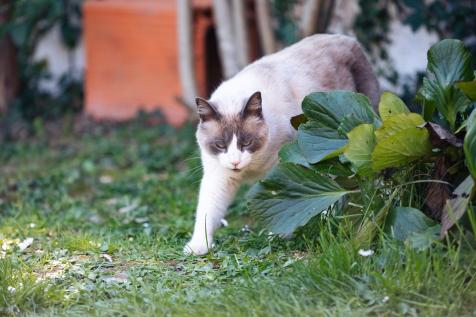Effect of chitosan supplementation in a dry maintenance diet on phosphorus apparent digestibility in cats.

Introduction
Dietary phosphorus restriction has been shown to slow down kidney dysfunction and is one of the cornerstones of CKD management.1 ,2 Intestinal phosphate binders are additional tools useful in helping to control dietary phosphorus bioavailability and absorption.3 ,4 Chitosan is a natural polysaccharide obtained from crustacean shells chitin. Thanks to its cationic amino groups, chitosan can adsorb different acidic metabolites in the digestive lumen. This functional ingredient has been successfully used in humans and animals with reduced renal function, to decrease dietary phosphorus absorption and lower serum phosphate level.5-10 Incorporation of chitosan into the daily diet could make easier its spontaneous intake, especially in intractable or fussy pets.
Animals, materials and methods
Two groups of 7 healthy adult cats were used in digestibility trials to compare 2 dry diets, “Control” and “Chitosan”, in a cross over design (the duration of each trial was 3 weeks). The Control diet was a commercial dry diet intended for senior cats. The only difference between the 2 diets was chitosan added in the Chitosan diet (dose: 865 mg/kg DM) and included in the kibbles (Table 1). Faecal parameters (quantity, consistency, composition) were assessed and apparent digestibility coefficients of nutrients were determined.

Results
All cats consumed normally their daily ration and their body weight remained constant throughout the study. The mean apparent digestibility coefficients of nutrients are shown in Table 2. The mean phosphorus apparent digestibility coefficient was significantly reduced with the Chitosan diet compared to the Control diet. The mean protein apparent digestibility coefficient was also significantly lower with the Chitosan diet, however it remained in the reference range for a premium petfood.11 The other digestibility coefficients did not differ between the 2 diets. The faeces characteristics were not significantly impacted by chitosan supplementation: the mean faeces quantity was 48.3±7.9 and 51.6±9.1 g faeces/100 g of ingested DM and the mean DM content of the faeces was 36.0±3.4 % and 35.7±4.1 %, with the Control and Chitosan diets respectively.

Conclusions
This preliminary study shows that addition of chitosan (865 mg/kg DM) in a dry cat food reduces efficiently the phosphorus apparent digestibility, with no impact on the overall digestibility of the diet and the faeces characteristics of cats fed this diet. Chitosan could therefore be advantageous as an intestinal phosphate binder included in a veterinary “renal” diet, by helping control of phosphorus absorption and helping phosphatemia management in the long term.
References: 1) Boyd LM et al. J Vet Intern Med 2008; 2) Ross LA et al. Am J Vet Res 1982; 3) DiBartola SP. Proceed SEVC Congress, Barcelona, Spain 2011; 4) IRIS recommendations 2013; 5) Jing SB et al. J Pharmacol 1997; 6) Baxter J et al. J Pharmacol 2000; 7) Nagano N et al. Nippon Yakurigaku Zasshi 1995; 8) Wagner E et al. Berl Munch Tierarztl Wochenschr 2004; 9) Pechereau D. Proceed AFVAC Congress, Nantes, France 2003; 10) Brown SA et al. Intern J Appl Res Vet Med 2008; 11) FEDIAF Nutritional guidelines 2014.

